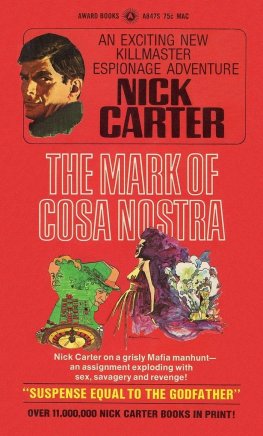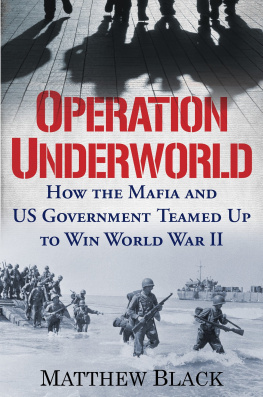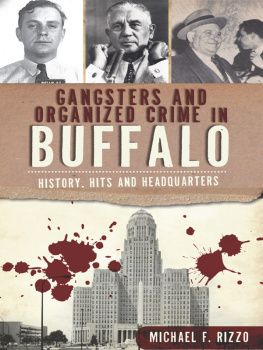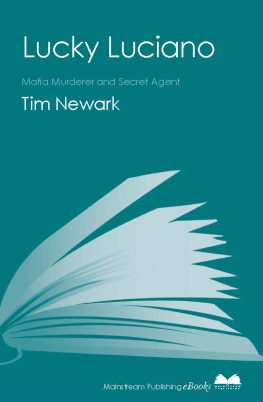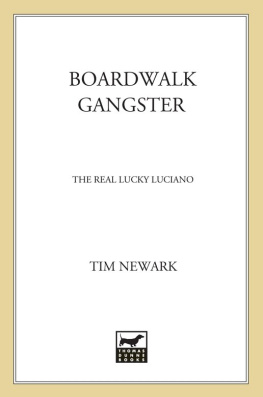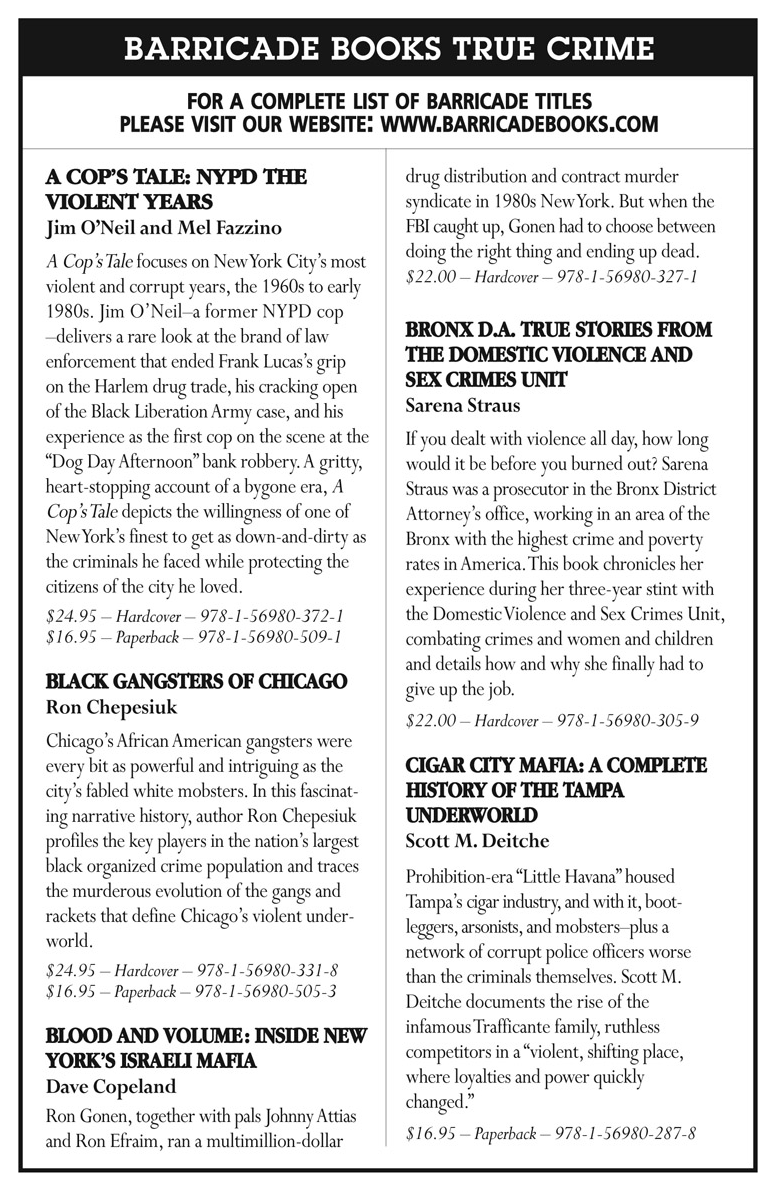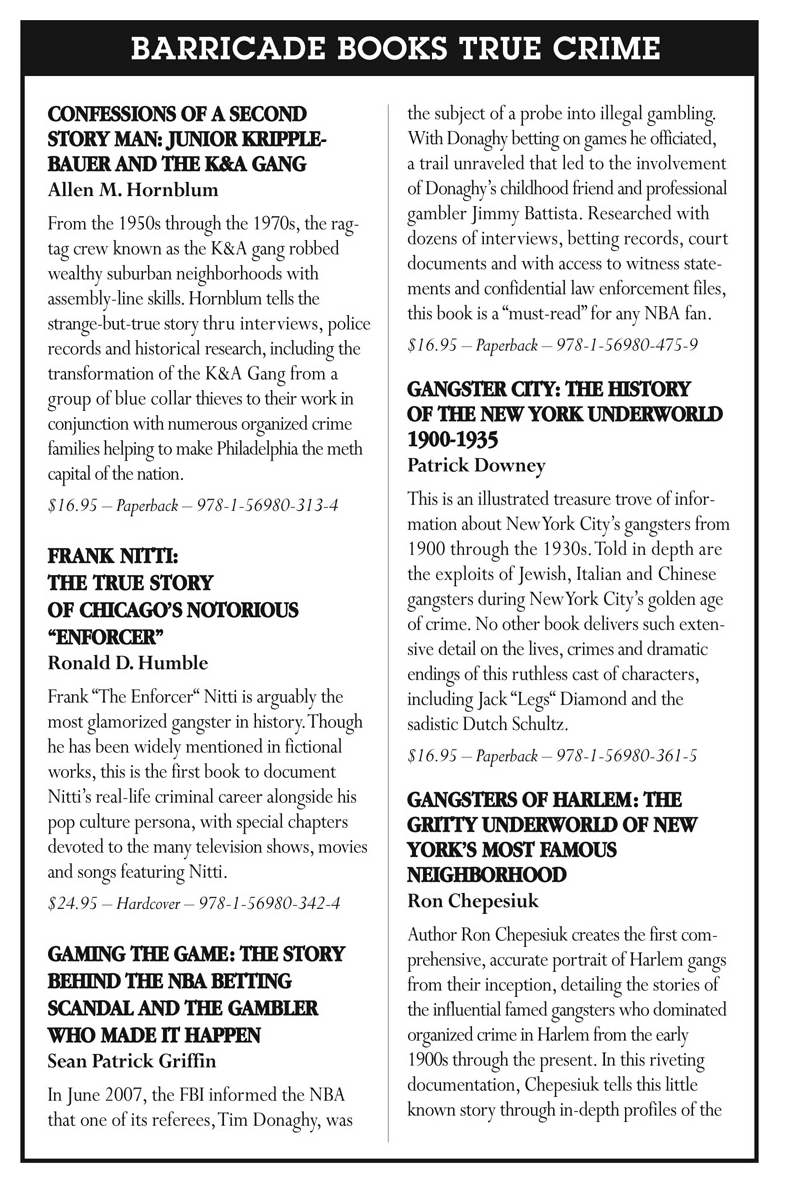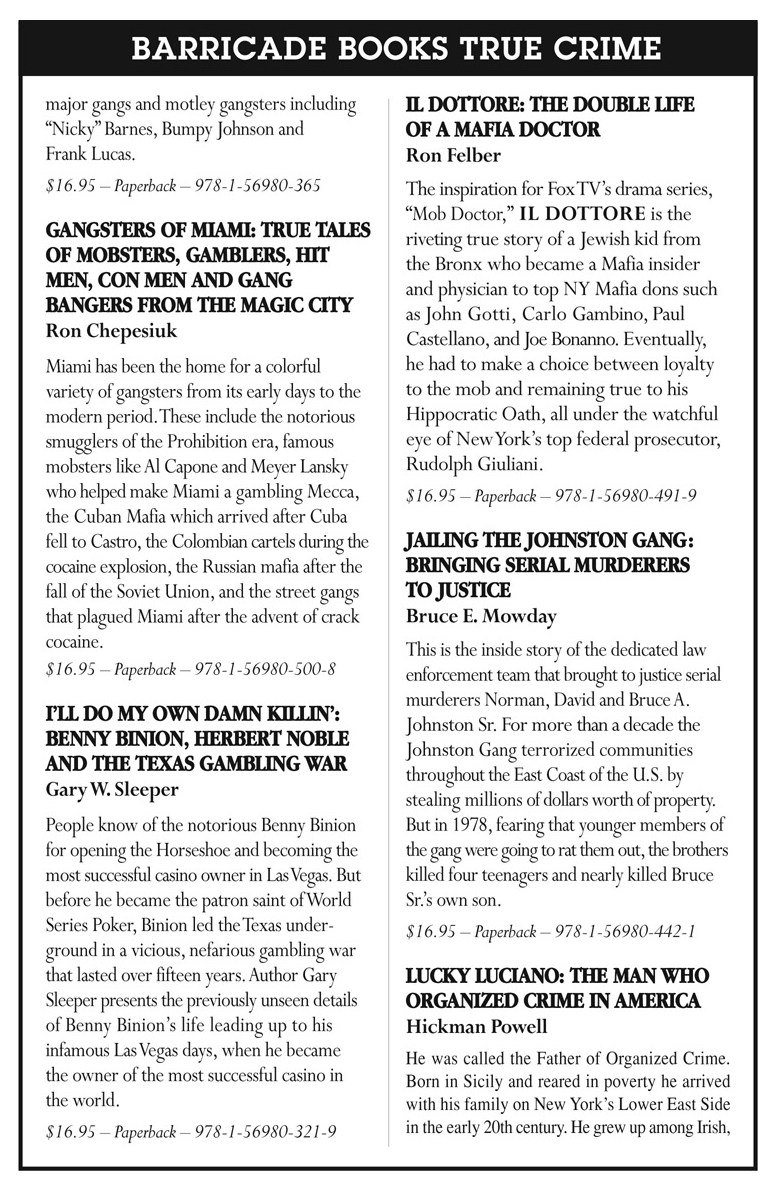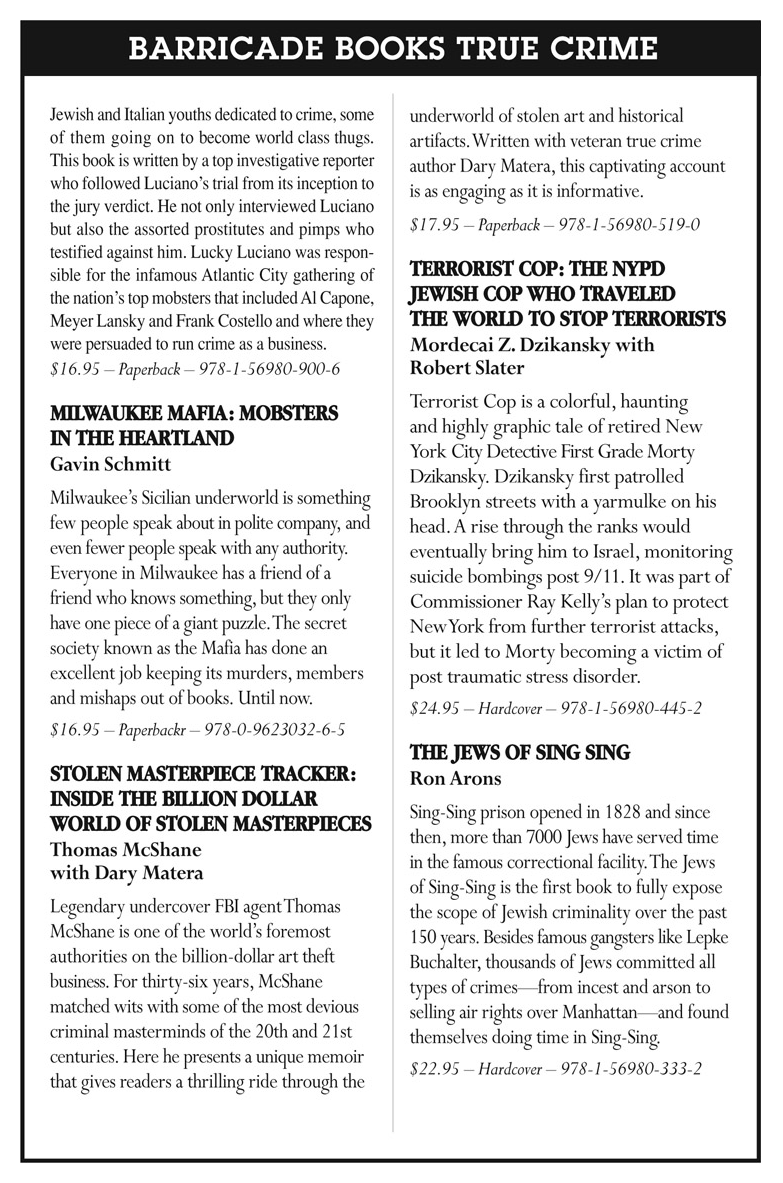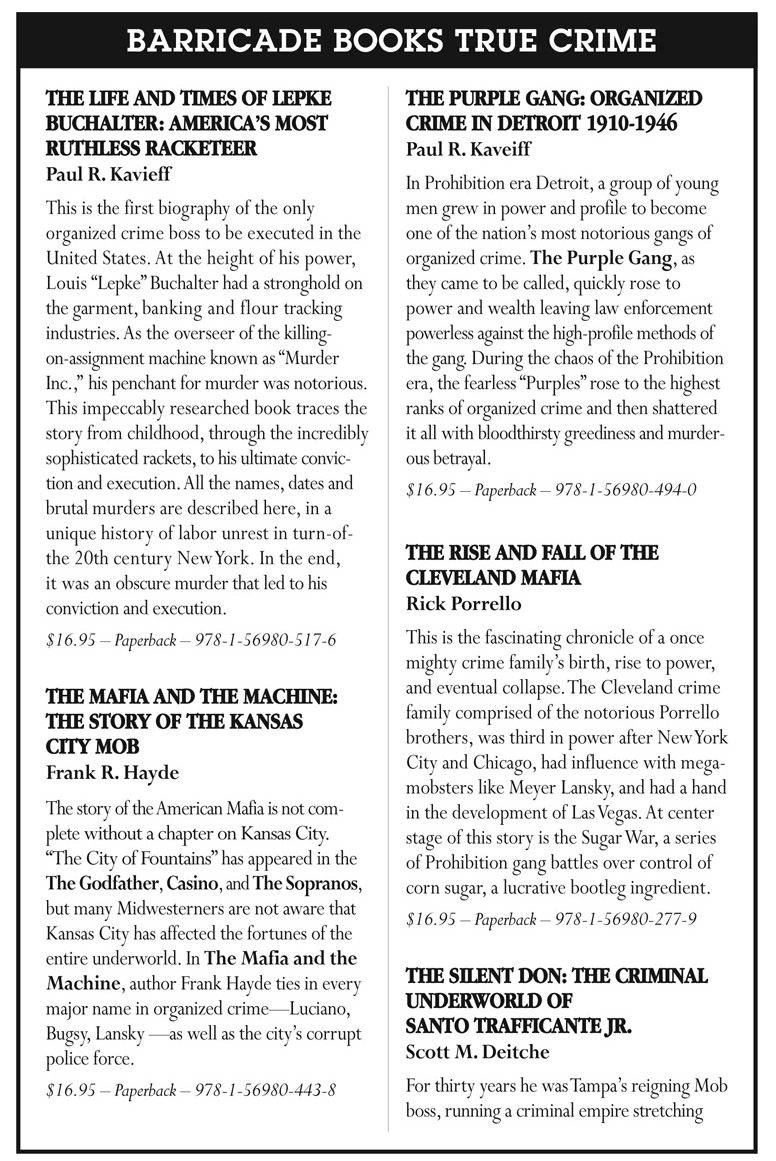Published by Barricade Books Inc.
2037 Lemoine Avenue
Fort Lee, NJ 07024
Reprint Edition 2015
Afterword Copyright 2000 by Ed Becker
Originally published as Ninety Times Guilty
Copyright 1939 by Hickman Powell
Library of Congress Cataloging-in-Publication Data
Powell, Hickman
[Ninety times guilty]
Lucky Luciano: the man who organized crime in America/
Hickman Powell
p.cm.
Originally published as Ninety times guilty, 1939
Hardcover: ISBN 978-1-56980-163-0 (alk. paper)
Paperback: ISBN 978-1-56980-900-6
1. Luciano, Lucky, 1897-1962. 2. Criminals-New York (State)-New York-Biography. 3. Organized crime-New York (State)-New York. 4. Mafia trials-New York (State)-New York. I. Title.
HV6248.L92 P68 2000
364.1092-de21
00-044478
Printed in the United States of America
10 9 8 7 6 5 4 3 2 1
FOREWORD
Barricade Books has reissued Lucky Luciano; The Man Who Organized Crime in America , by the late New York Times investigative reporter, Hickman Powell. The book was originally published in 1939, under the tittle Ninety Times Guilty .
For the newcomer to the world of organized crime reading, the book introduces the usual subjects and suspects; from the Atlantic City conference, to Capone, to the Cuban conclave that effectively signaled the end of Charlie Lucky Luciano as an underworld power.
Lucky Luciano; The Man Who Organized Crime in America is a treasure trove of details. As an example, not only do we learn the name of the man who owned the infamous Nuova Villa Tammaro, (Gerardo Scarpato) the spaghetti-house restaurant on Coney Island where Joe the Boss Masseria was murdered, we discover what happened to Mr. Scarpato afterwards. (He fled to his native Italy, returned to the US after several months and was murdered by persons unknown.) The book offers a listing of the cast of characters in the first chapter and each chapter is compartmentalized to offer a quick grasp of the various stages of Charlie Luckys now famous trial for pandering.
Hickman Powell writes like the insider he was during his long and impressive career as a journalist. He covered the Seabury investigations for the old Herald-Tribune newspaper, and was with prosecutor Thomas E. Deweys investigation into the New York underworld from its very beginning until its end. As a result, Lucky Luciano; The Man Who Organized Crime in America is a clear, complete, and perhaps only accurate version of the trial. Powell interviewed Luciano firsthand, and knew, personally, the quirky cast of underworld characters who helped to usher Lucky Lucifer, as they called him behind his back, off to prison.
In 1942, Powell followed the unflappable Thomas E. Dewey to Albany and the governors mansion as a staff researcher, and later worked for Dewey, as a speechwriter in Deweys 1944 and 1948 ill-fated campaigns for the White House. Powell ended his career as a staff aide to the all-important, although now long forgotten, New York State Joint Legislative Committee on Wiretapping. A committee, by the way, illegally wiretapped by J. Edgar Hoovers FBI.
Powell died in 1966, outliving Luciano by four years. Dewey outlived both of them, dying in 1971.
Powell writes of the underworld cretins that are the base of this book, with a respectful distance and disdain. But Powell was nobodys fool. Its obvious he understood the street mentality of crucial witnesses like Cokey Flo Brown and Jennie the Factory, and a dozen others of questionable character, rounded up by a desperate Dewey in order to bring his case to court.
There are few personal glimpses given by Powell into Dewey or Luciano. This is, after all, a crime reporters book, based on substantive facts. Yet, while Powells respect for Dewey and his staff is apparent from the beginning to the end of the book, the authors reporters instincts dont allow Dewey to slip away unscathed; we learn that Lucianos argument that he had been railroaded on the rickety evidence of hookers and goons who had been bribed by Deweys office with free trips to Europe and a steady and uninterrupted flow of narcotics, suspiciously missed by the blind eyes of justice, may have been based in some truth.
Another important but much overlooked aspect of Deweys case covered by Powell, is the fact that, contrary to legend, the state did have a fairly large number of witnesses it used against Luciano who were of sound, upstanding character. Unfortunately for Dewey, they palled in comparison to the twenty-eight eccentric prostitutes that were also used by the State to bring Luciano down; Street people like Cokey Flo Brown, a morphine and opium addict, whom the presiding judge allowed to down a few shots of brandy during her testimony to keep the shakes from overwhelming her. Oddball or not, in the nine hours of her testimony, not one of Lucianos razor sharp trial lawyers could trap her in a lie or an inconsistency.
Deweys strategic use of drug-addicted hookers against Luciano must have been a sore point for Charlie Lucky, who, during his brief career on top of national syndicate, went out of his way to distance himself from the rough stuff as he called it; prostitution and drugs. However, as Powell well establishes, Charlie Luciano was a pimp and drug pusher. Perhaps not a front-line pimp and drug dealer, but a pimp and a drug dealer, nonetheless.
Were also introduced to some of the defense teams star witnesses, such as Patrolman George A. Heidt, whose testimony on Lucianos behalf led to a well-deserved full scale investigation into Heidts personal life by the New York Police Department. It turned out that the beat cop, who earned about fifty-two hundred dollars a year, had managed to bank an amazing $22,288. Heidt was tossed off the force when he failed to offer a reasonable explanation for the money, but was reap-pointed a year later, on appeal.
This handsome book, cover design by Carmela Cohen, is worth having on your shelf and it also sends a vote of confidence to some of the independent publishers, like Barricade, to continue to make efforts to reintroduce some of the organized crime classics.
John William Tuohy
INTRODUCTION
A cargo plane from Naples put down at Kennedy International Airport on February 8, 1962. Freight handlers, emptying its hold, lifted a sealed coffin which was put into a waiting hearse and borne over six miles of Queens County roads to St. Johns Cemetery in Middle Village. There, in the presence of two mourners, a few reporters and about 50 FBI agents, narcotics officers and New York City detectives, the coffin was stowed in the Lucania vault. A metal plate on the casket identified the deceased as Salvatore Lucania. One mourner, asked by a newsman to identify a saintlike figure depicted in a stained glass window, replied: I dont knowIm not acquainted with saints.


